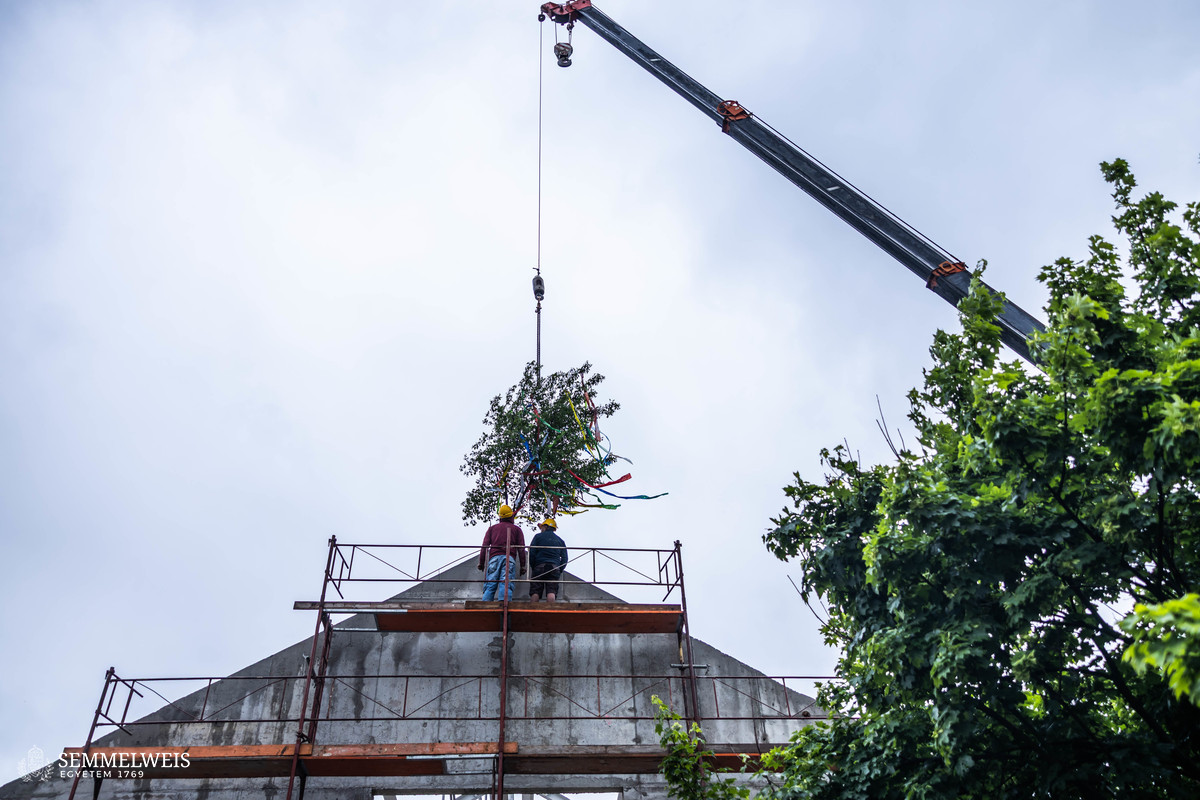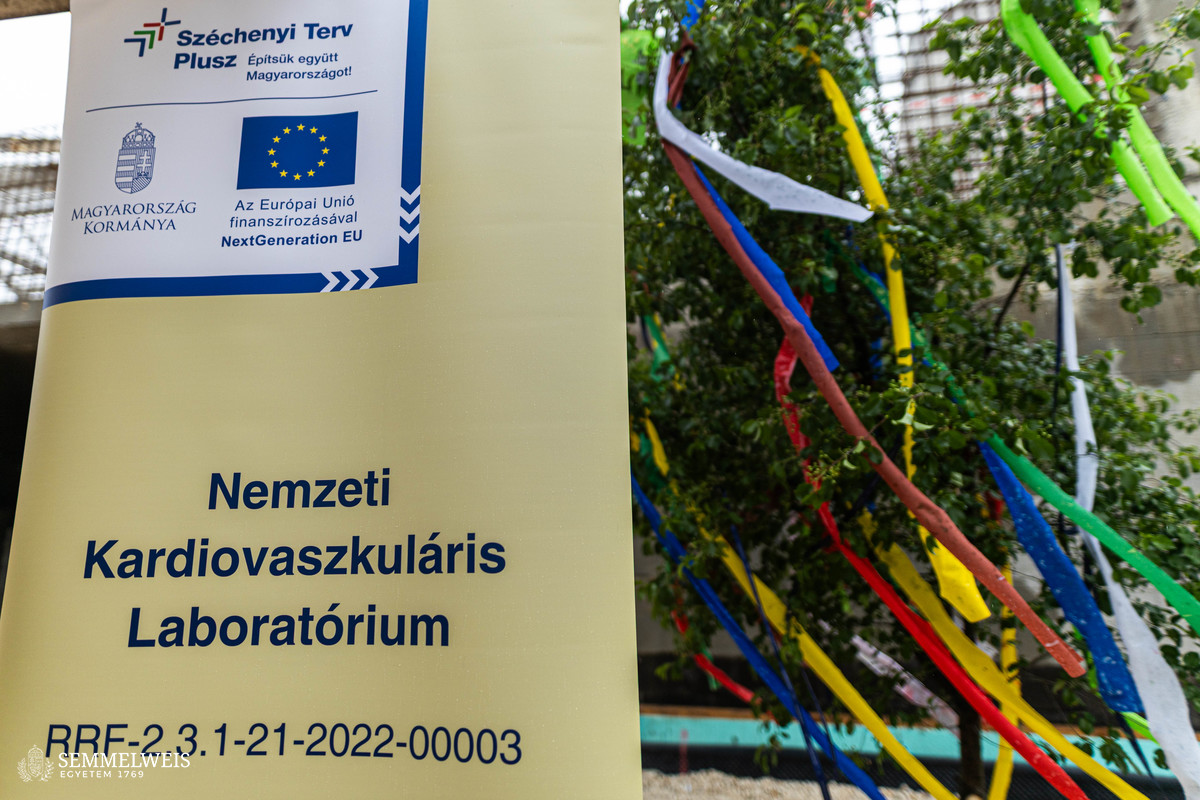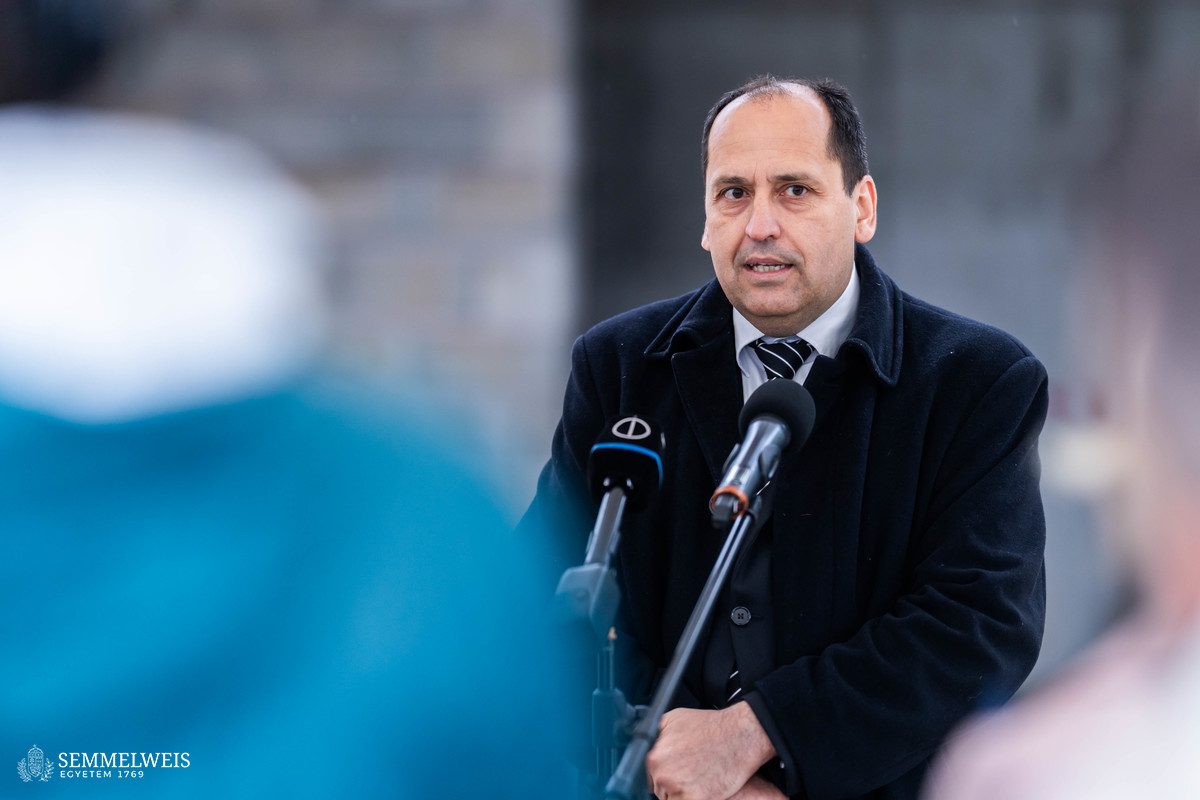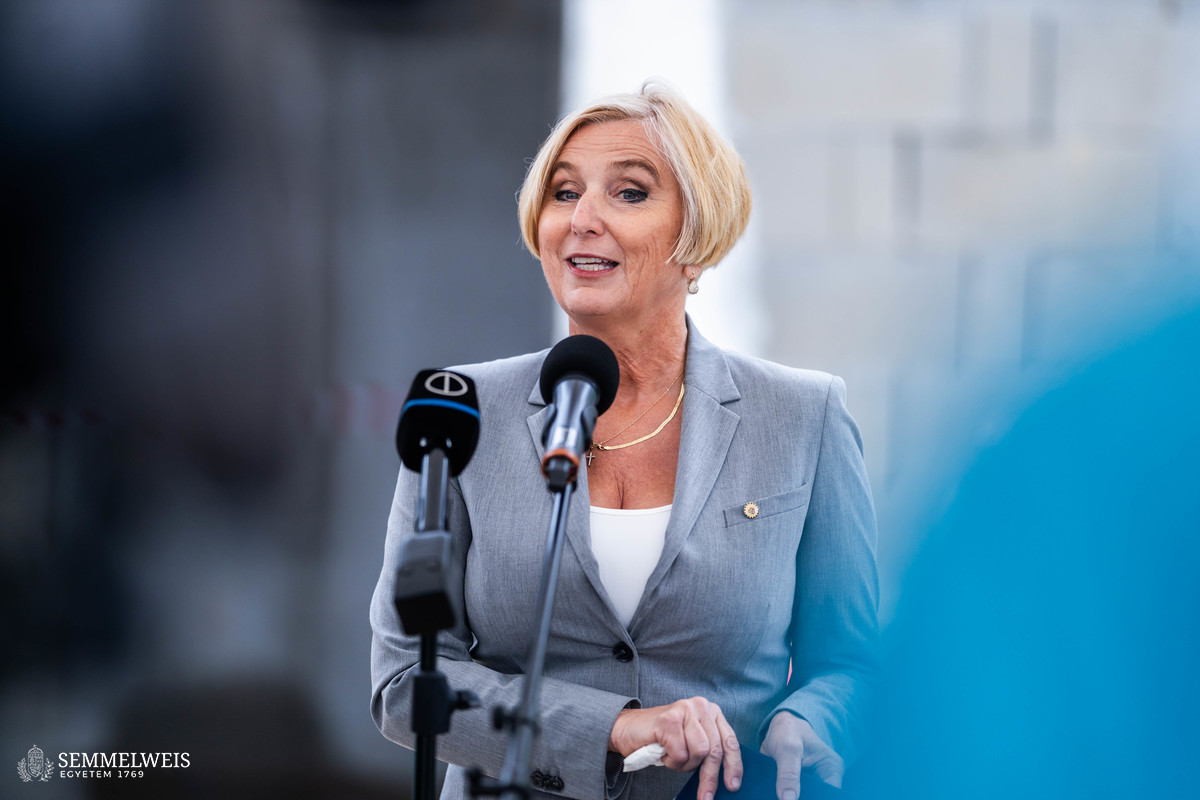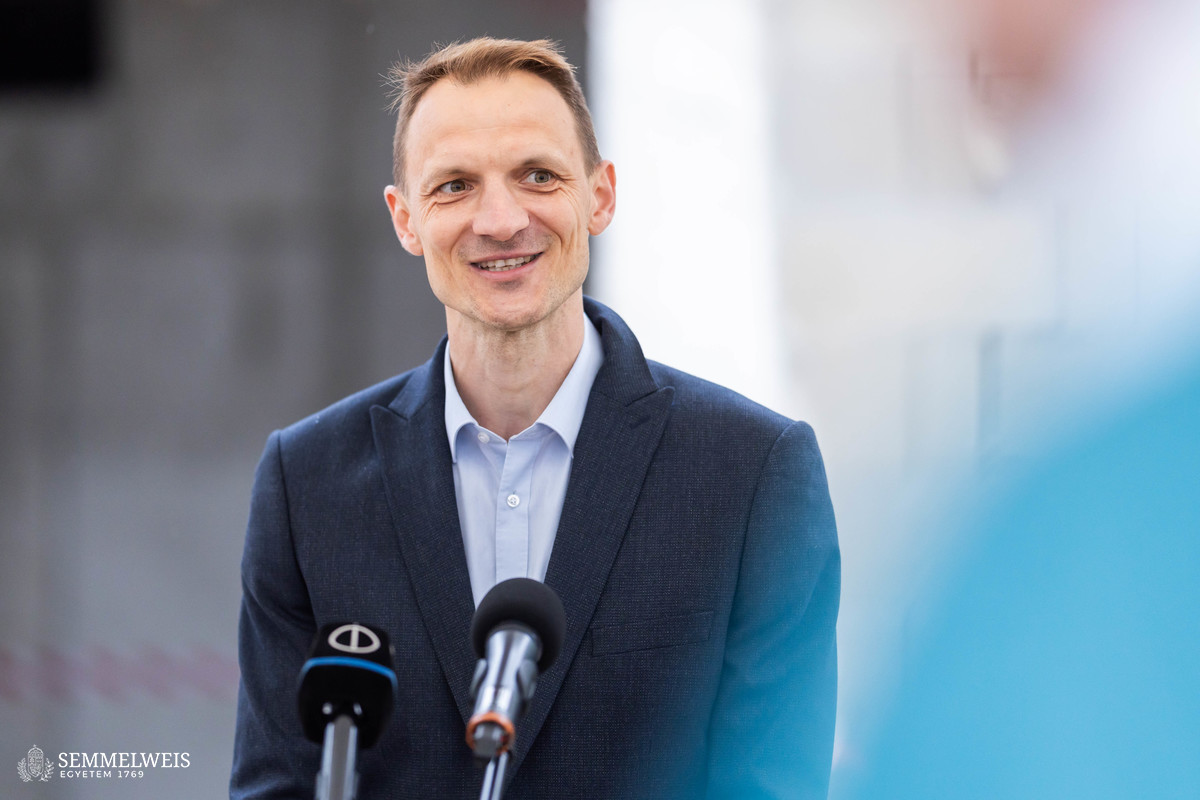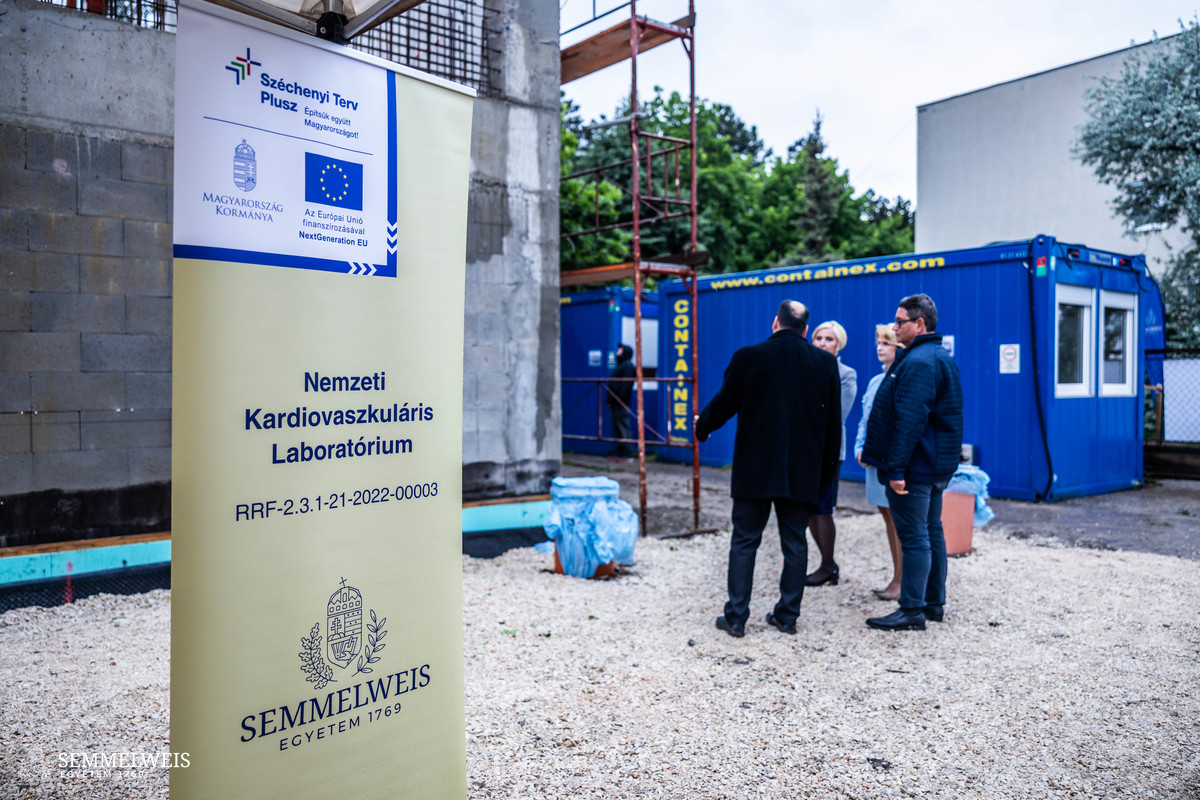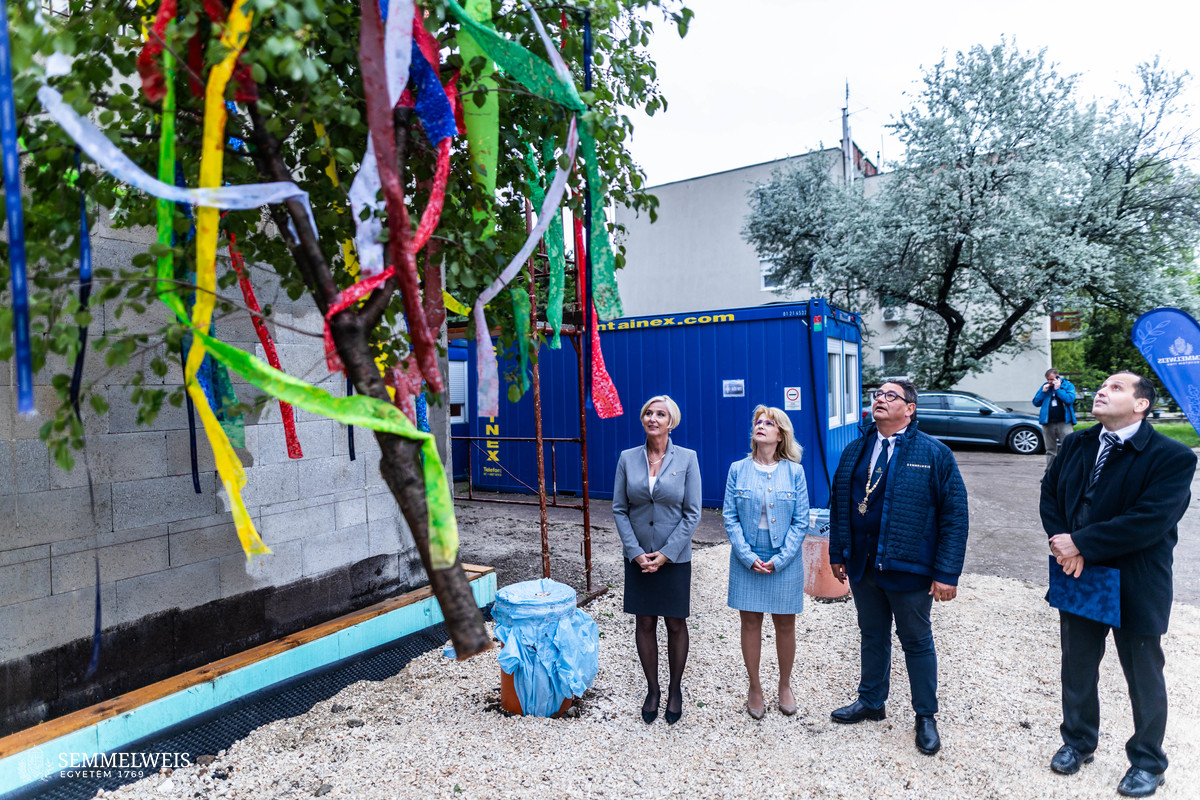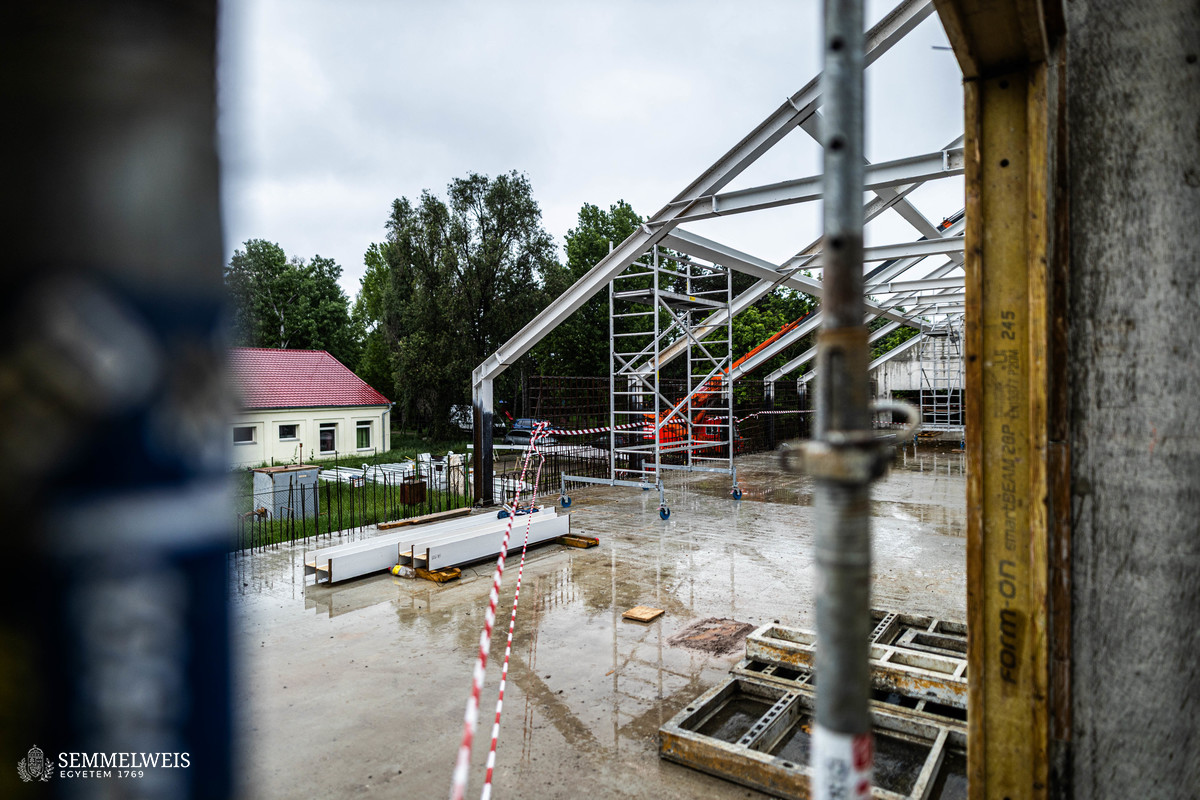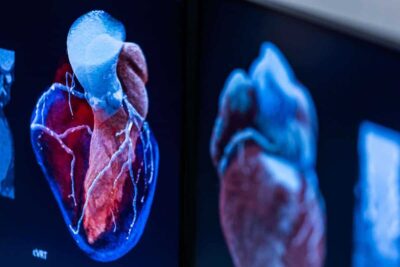“For more than a decade, Semmelweis University’s site in Herceghalom has been home to the George Berci Surgical Training and Research Laboratory of our Department of Experimental Cardiology and Surgical Techniques. The current development, worth almost HUF 2.2 billion and mainly financed from domestic sources, is a very significant step in the university’s education and research projects, as it will provide experimental surgical and cardiovascular training for the next generation. This is the top investment of the National Cardiovascular Laboratory (NKL) project, which is a continuation of the National Heart Program,” said Dr. Béla Merkely, Rector of Semmelweis University, in his welcome speech at the topping out ceremony.
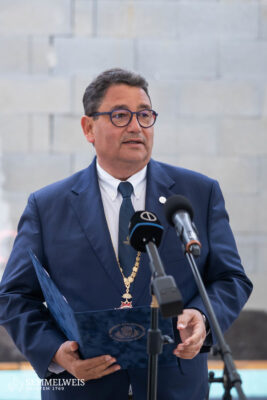 As he pointed out, Semmelweis is one of the world’s top 300 universities, a true European knowledge center, and its goal is to be among the world’s top 100 universities by 2030. “All this serves to train the best doctors and allied health professionals, and to make our scientific output the driving force of our nation, even in the field of healthcare innovation,” the rector stressed, adding that the investment now underway was another step towards realizing this vision, as it would significantly increase and modernize Semmelweis University’s teaching and research capacity.
As he pointed out, Semmelweis is one of the world’s top 300 universities, a true European knowledge center, and its goal is to be among the world’s top 100 universities by 2030. “All this serves to train the best doctors and allied health professionals, and to make our scientific output the driving force of our nation, even in the field of healthcare innovation,” the rector stressed, adding that the investment now underway was another step towards realizing this vision, as it would significantly increase and modernize Semmelweis University’s teaching and research capacity.
The institution in Herceghalom plays a key role not only in the training of residents and specialist doctors, but also in the undergraduate program. “A real surgical skill and core laboratory will be created here, which is of particular importance for the future training of doctors,” Dr. Béla Merkely underlined. As he pointed out, the site would also be one of the bases for cardiovascular experimental research, which was especially significant in view of the cardiovascular mortality and morbidity rates in Hungary.
He also said that as part of the NKL project they were, among other things, seeking answers to the question of how to effectively preserve the donor heart as well as implement therapeutic improvements in the treatment of heart failure, and they were also planning to present important findings in the field of atherosclerotic heart disease. The rector concluded his speech by thanking the contractor, the university staff, and the mayor of Herceghalom for their work on the project.
In his ceremonial address, Dr. László Lengyel, Vice President of the National Research, Development and Innovation Office (NKFIH), highlighted the role of national laboratories in the education of young researchers, adding that good research was always marketable. “So, it is worth maintaining quality in every sense because there is always demand for first-rate research and results,” he said.
“This project is of great importance not only to the scientific community, but also to Herceghalom, and we are very proud to be the home of this facility,” said Mayor Zsuzsanna Csizmadia, thanking the developers and investors for their work and the community for its support. She wished the team working in the laboratory successful research, fruitful collaborations, and breakthrough discoveries, confirming that the local government would continue to provide all the support necessary to make this research center the way it was envisioned.
“In the construction industry, it is always a special moment when a building reaches its highest point and the topping out ceremony can be held,” said Tamás Sipos, Managing Director of the contractor Fehérép Ltd. “Construction is progressing ahead of schedule thanks to the exemplary cooperation between the local government, the client, the local representatives of the university, technical inspectors, and the construction team,” stressed Tamás Sipos, noting that 600 tons of concrete and 110 tons of steel reinforcing bars had been installed in the building’s frame, on which a total of 30 tons of rolled steel structure would be placed. To conclude the ceremony, the contractors placed a tree decorated with streamers on the highest point of the building.
The project, which includes the extension and reconstruction in Herceghalom, will result in four times the current useful floor space being available for teaching and research. The equipment and infrastructure will also be much more modern, with the possibility of robotic surgery and X-ray examinations, for instance. The renewed infrastructure will be used as a core laboratory, with the spare capacity beyond university use being sold as a research and development service. The HUF 2.2 billion development is mainly financed from domestic sources and to a lesser extent from the RRF-2.3.1.-21-2022-0003 call for proposals. The development will also serve the Juhász-Nagy Sándor Scientific Research Laboratory of the Városmajor Heart and Vascular Center, which is one of the main sites of the NKL project.
Anita Szepesi
Translation: Dr. Balázs Csizmadia
Photos by Bálint Barta – Semmelweis University
